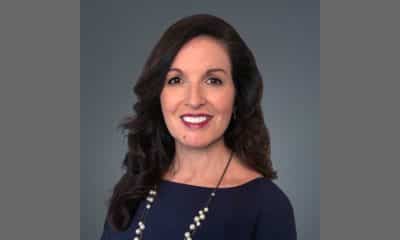Know
Tampa Bay’s top business women spill the secrets to getting on a corporate board

Networking, professional associations and in-demand skills are among the factors that five local women executives say helped them win spots on corporate boards of directors.
Shifting business demands and expectations also play a key role, said Deborah Ellinger, former CEO of Ideal Image in Tampa.
“I’ve seen a change in the last 15 years in how boards go about finding candidates,” said Ellinger, who serves on the boards of iRobot (Nasdaq: IRBT) and Covetrus (Nasdaq: CVET). “Fifteen years ago, the guys —and it was all guys — would say we need to fill a gap, who do you know? By definition, they would choose people who looked a lot like themselves, so it was a little self-perpetuating.”
That started to change in the past decade, as directors put more demands on their own CEOs, limiting their ability to serve on other companies’ boards. To fill openings, directors started to look at other C-level executives, such as chief financial officers, human resource leaders and general counsels. Women hold many of those positions.
“So we started to see diversity. And when it started, we began to go into a much more disciplined process,” said Ellinger, who moderated a panel of female corporate directors who shared their stories and tips Tuesday night at Tampa Bay Business & Wealth’s Women of Influence series.
There’s been progress, said Bridgette Bello, publisher and CEO of Tampa Bay Business & Wealth.
In 2011, women held 14.6 percent of the board seats at the 800 companies in the gender diversity index compiled by 2020 Women on Boards, a nonprofit advocacy group. Now, women make up 20.8 percent of the directors at those companies.
Related story: It’s 2019 and there are still no women in those local companies’ boardrooms
One of the early local trailblazers was Judy Schmeling, former chief operating officer and chief financial officer at HSN in St. Petersburg and president of the company’s Cornerstone Brands. Schmeling had the skills Constellation Brands (NYSE: STZ) needed when she was recruited to serve as chair of the board audit committee in 2013.
“This company was looking for specifically a woman CFO. That’s like finding Elmo on Christmas Eve. There’s not many of us,” Schmeling said.
Schmeling said she didn’t have the time while at HSN to serve on a nonprofit or civic board, but that’s the path taken by some of the panelists, including Ann Duncan, executive vice president at Savills, a global real estate firm.
Savills bought the company she founded, Vertical Integration, four years ago and she now serves on the Savills board as well as on the board of Sabal Trust in St. Petersburg. Before that, she was the first woman to chair the Clearwater Chamber of Commerce.
Without a lot of Fortune 500 companies headquartered in the area, the civic route was a way to get engaged and learn how to be on a board, she said.
“Sometimes that’s where you have to start if you are here in Tampa Bay,” Duncan said. “But I do believe if you are going to do it, you better lead it. You need to be the chair and you need to make things happen and to have results. Then I think that does continue to help you be more successful in whatever you are doing professionally.”
There are differences between serving on nonprofit and corporate boards, said Artemis Emslie, former CEO of myMatrixx. She’s now the principal owner of AGM Holdings and sits on two for-profit boards and four non-profit boards.
“It is roll your sleeves up on a nonprofit. It is time intensive and it’s more of an operator role. On boards in the for-profit sector, you do have to separate yourself from being an operator to being a board director. It is a very different role,” Emslie said, citing her own experiences on a corporate board. “It was how to sit back, ask questions and not want to do. You are mentoring, you are guiding, but you’re not the doer, and you have to respect what’s on the other side of the table.”
Private equity-backed company boards also are distinct from those of publicly traded companies, said Rebecca White, the Walter Chair of Entrepreneurship, and director of the John P. Lowth Entrepreneurship Center at the University of Tampa. She’s been on the boards of the venture capital-backed companies she founded early in her career, as well as the board of the former NorthStar Bank in Tampa. She currently serves on the board of MarineMax (NYSE: HZO), a Clearwater boat and yacht retailer.
“There was a lot more focus in private equity on immediate outcomes and more of a sense of urgency. That’s not to say public companies don’t have to perform but the shareholders were a lot closer [at PE backed firms] so shareholder impatience was also an issue in the private equity companies. It felt to me a bit more intense,” White said.
Many companies are looking for outside directors who can contribute to their growth.
“They’re looking for what you did to make your company successful … and the broad experience that will help them expand and grow,” Emslie said. “I would encourage you to figure out how to create a bio that tells that story really quickly.”
Networking is vital, Schmeling said.
“That’s how you meet someone who meets someone who meets someone. That’s how I ended up on my first board. It was a domino impact,” she said.
A LinkedIn profile, with all the right buzzwords, also will draw attention. There are firms that specialize in building LinkedIn profiles, as well as firms that specialize in board recruitment, Schmeling said.
Outside organizations such as the National Association of Corporate Directors and BoardProspects provide good connections, said White, who serves on the NACD board.
Each executive also offered some advice to prospective board members.
“When you get in a leadership position, know what you are doing. Do your homework. Make other women proud and help other women.” — Ann Duncan
“Have a conversation with the CEO about what makes their board successful and how board members provide impact.” — Artemis Emslie
“Screen the company you want to be on the board of. Is this something that really resonates with you and something you are going to add value to? What are you passionate about? … And make sure you understand who your fellow board members are.” — Judy Schmeling
“You want to be around people you enjoy being with and that you can learn from. Find someone who can help you ask all the right questions. I didn’t know a lot of the quesitons that I needed to ask.” — Rebecca White
“Make sure you know who you are and what you bring to the table. Try to limit it to three simple messages. One thing women do often is they will tell you 10 things about themselves and then also five things they’re not very good at. So make sure you know what your three things are.” — Deborah Ellinger







